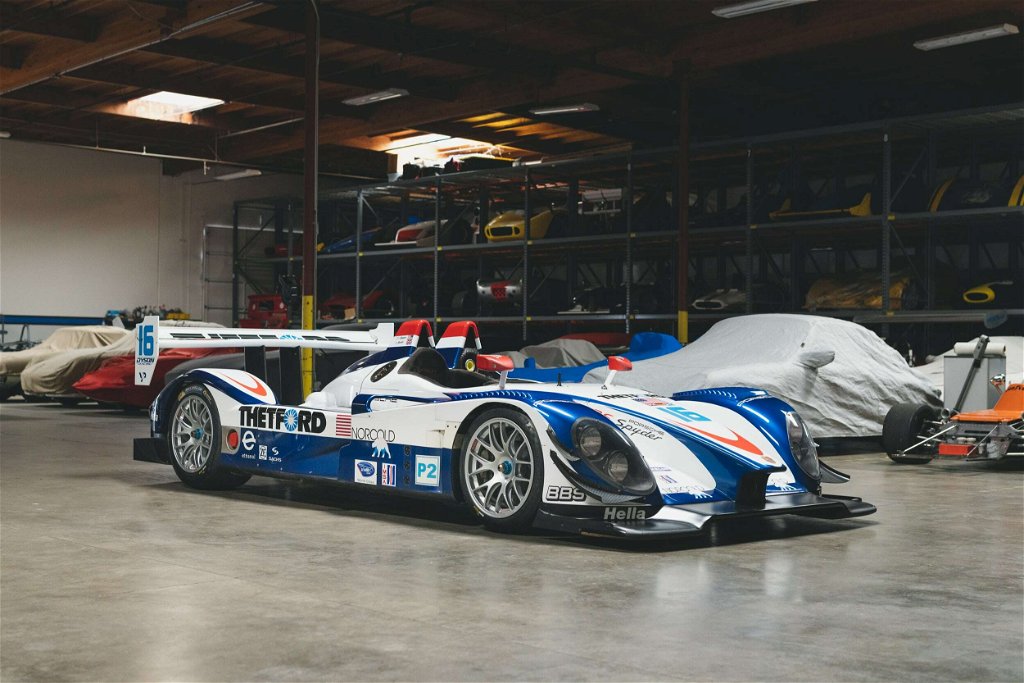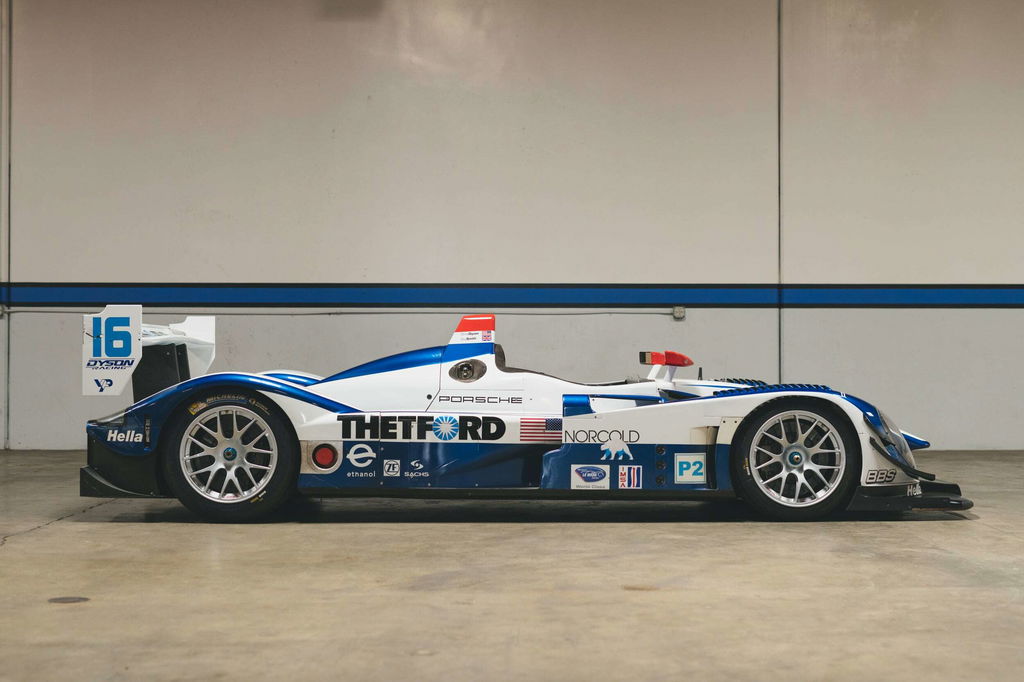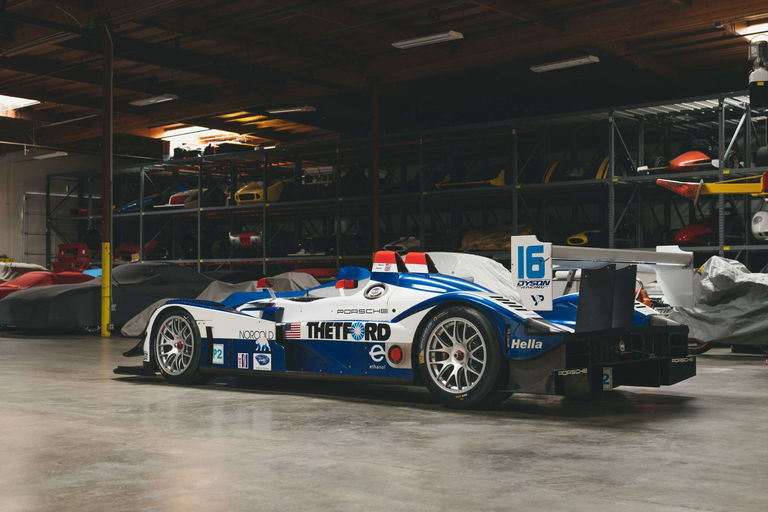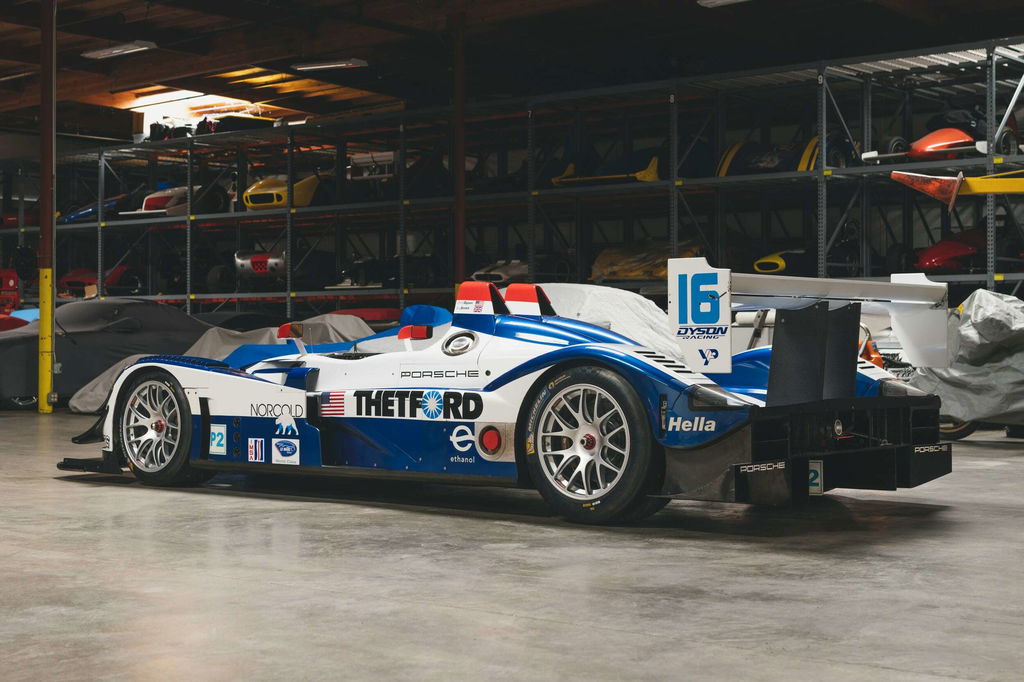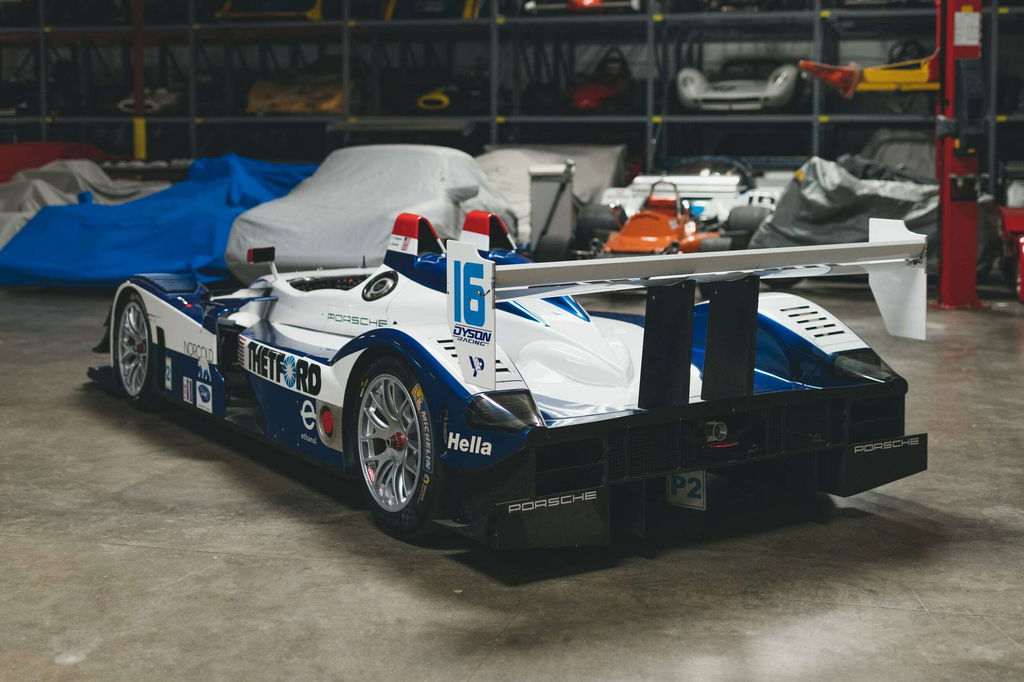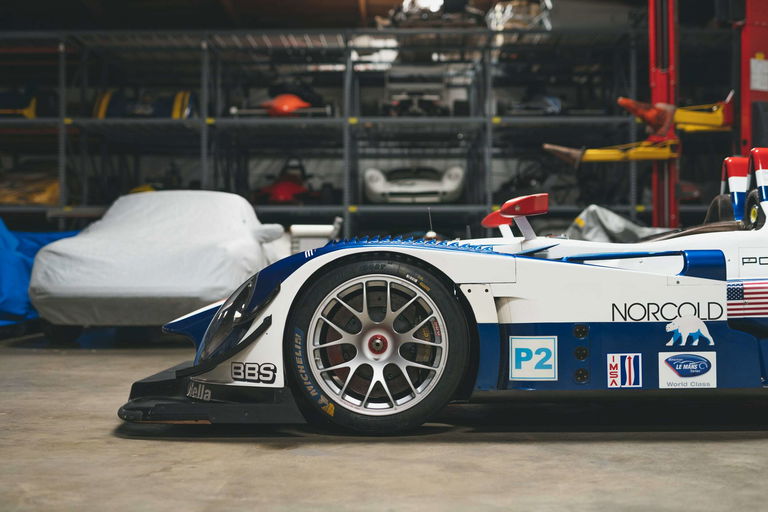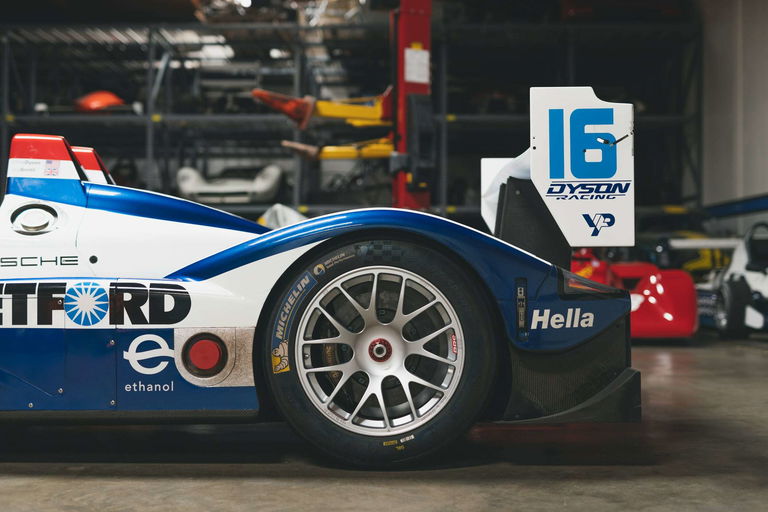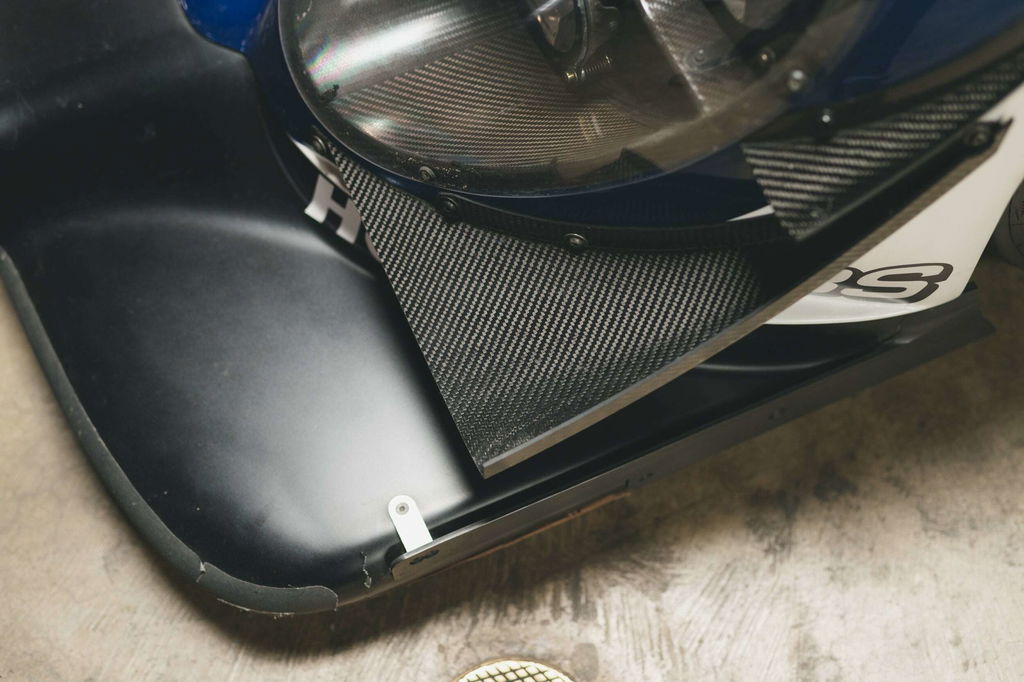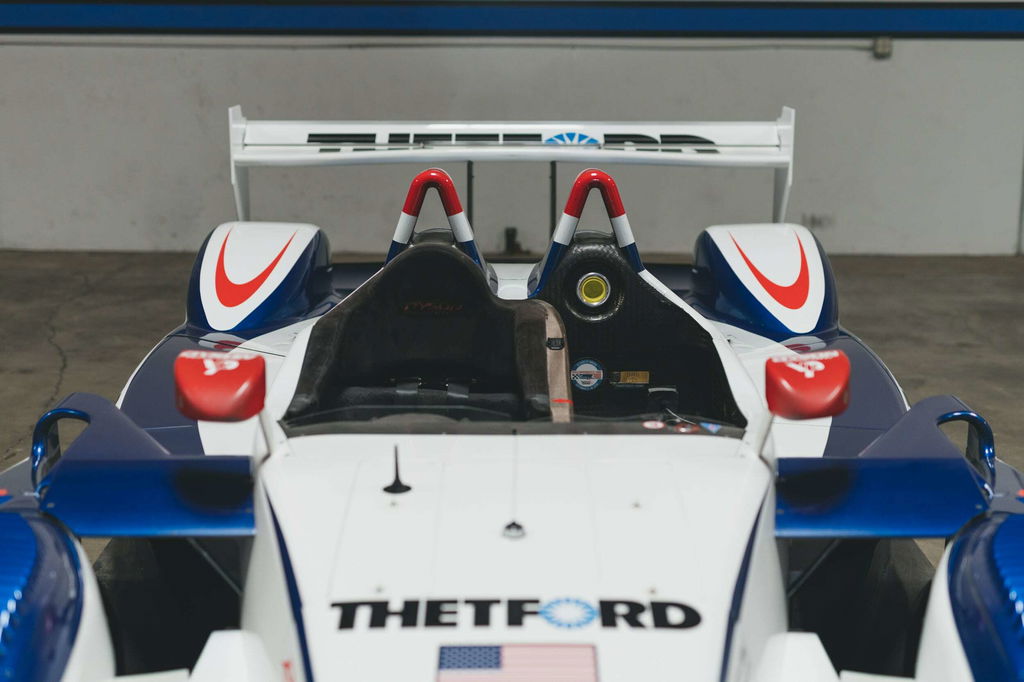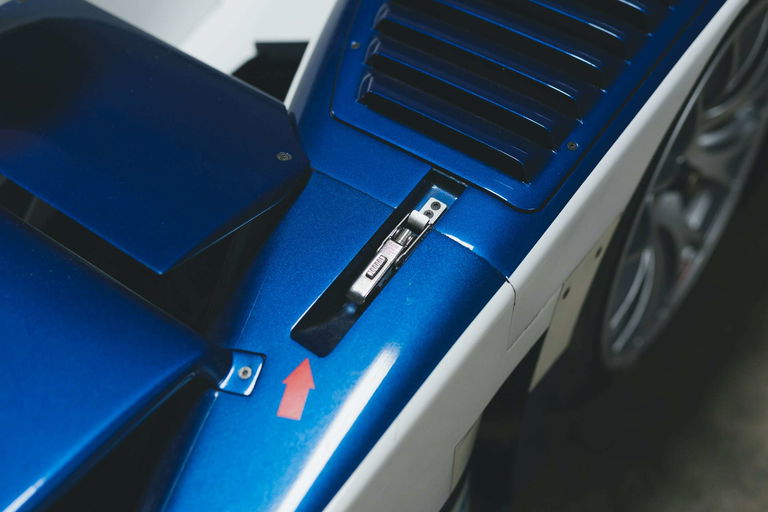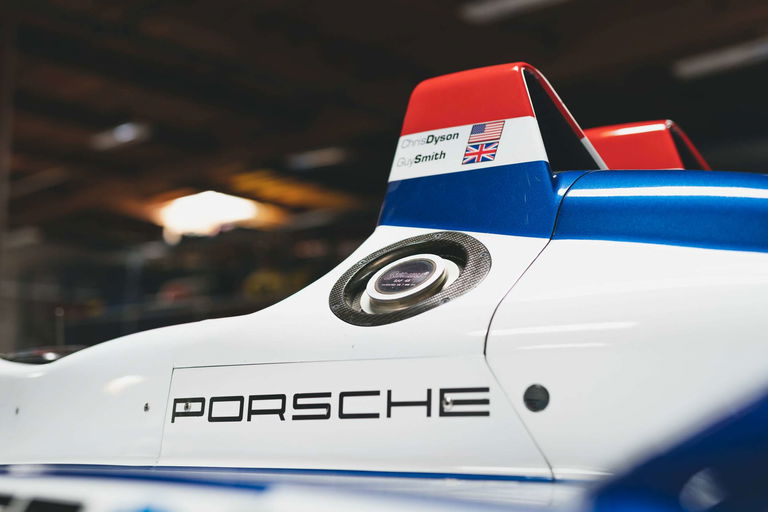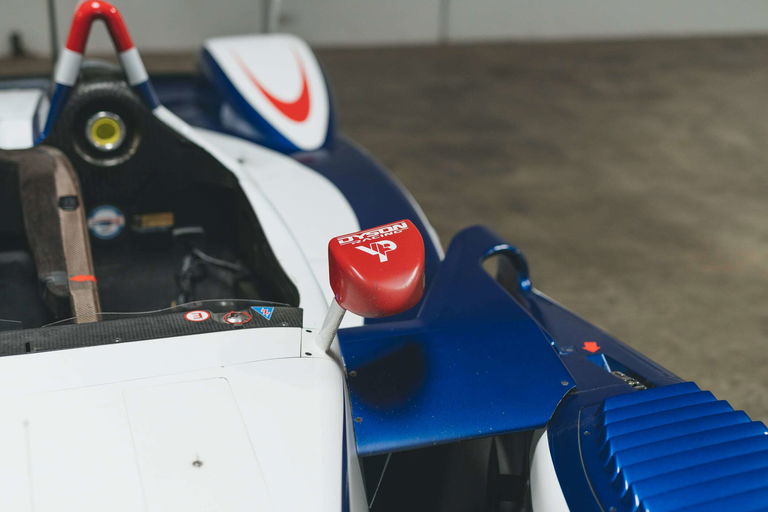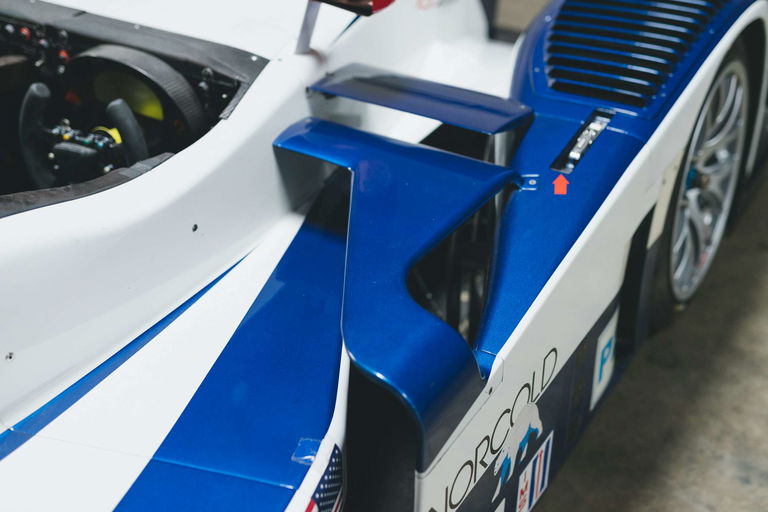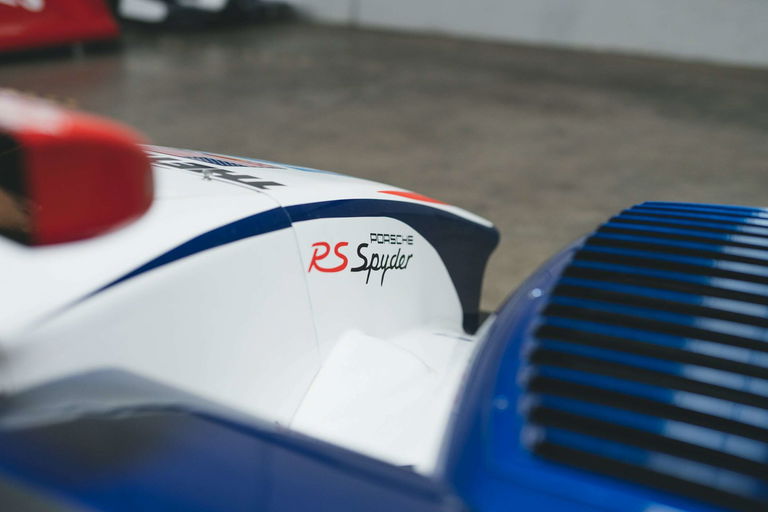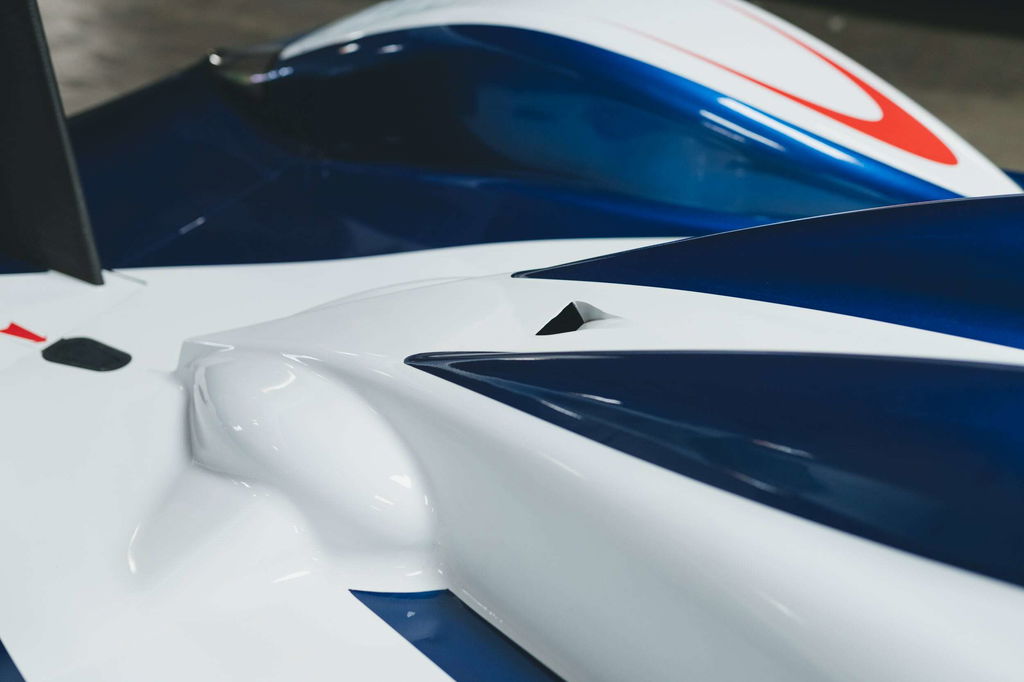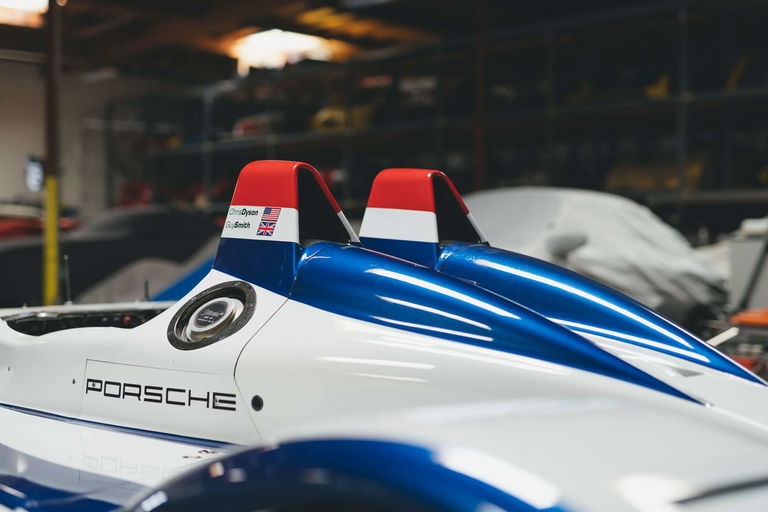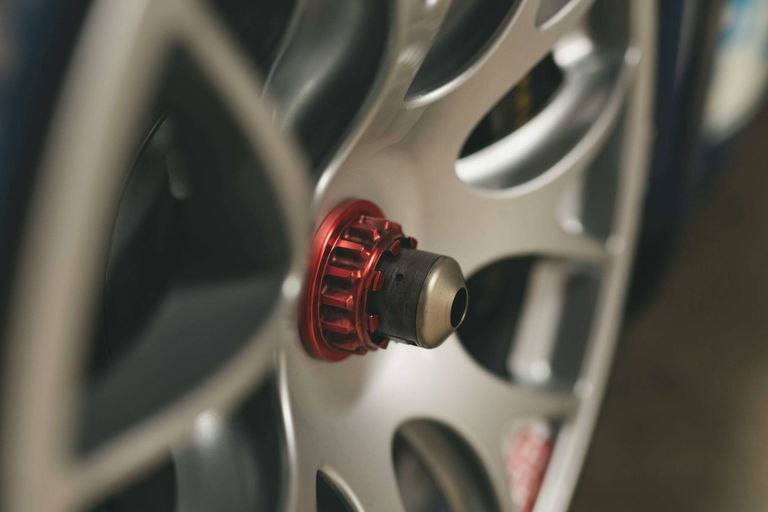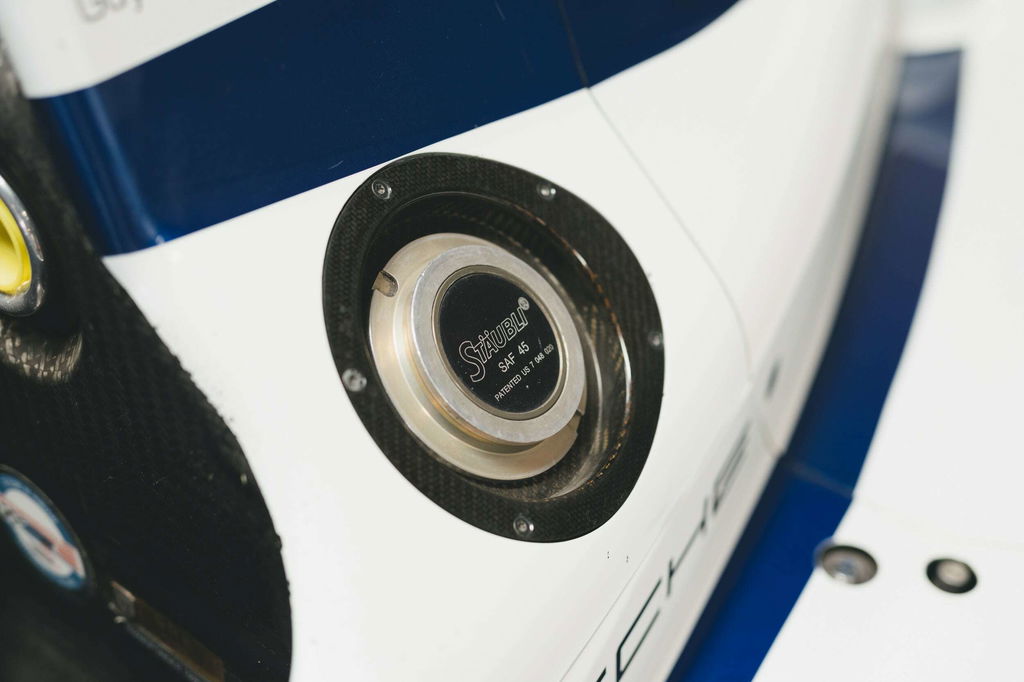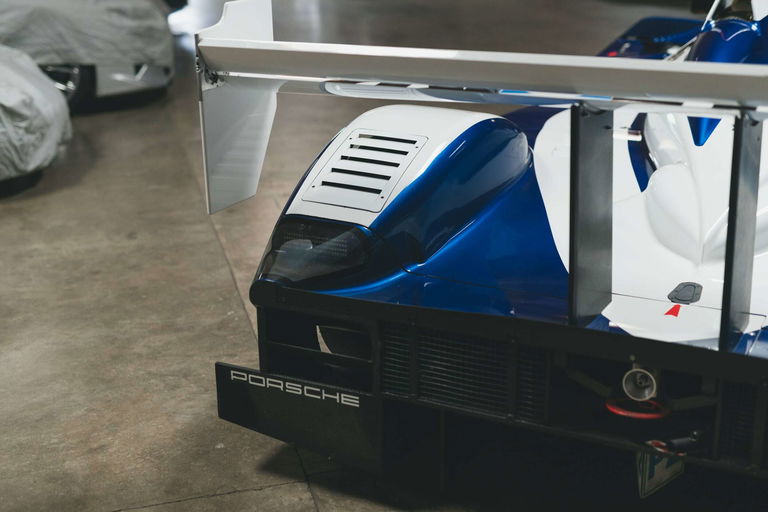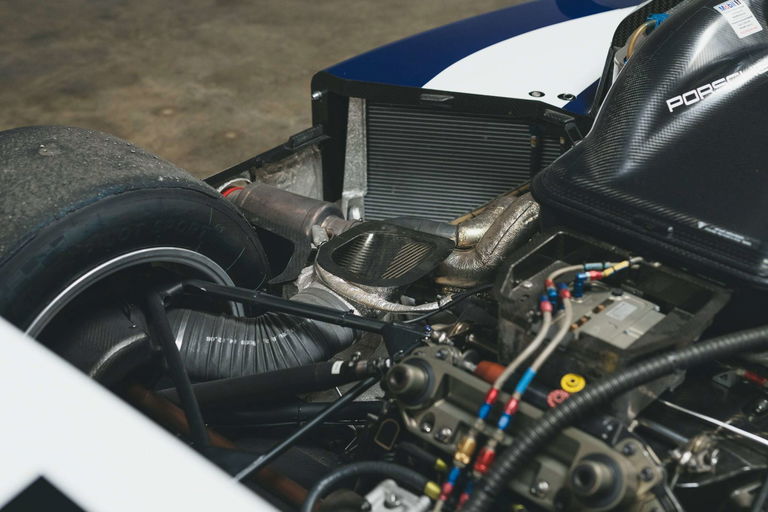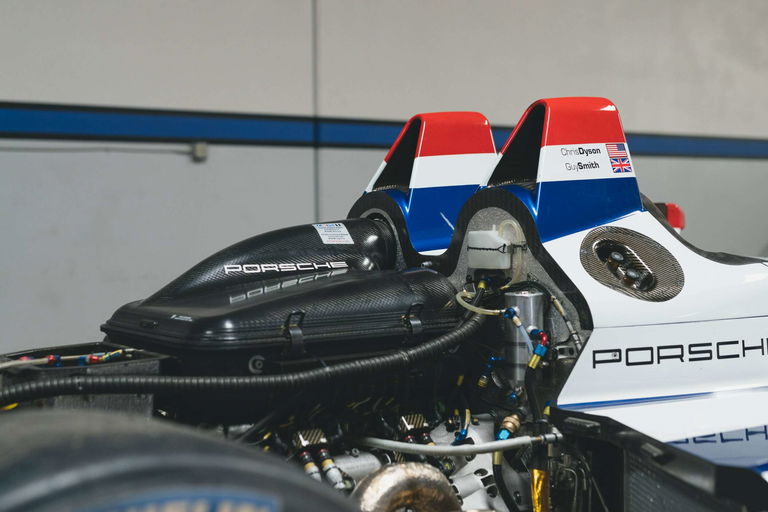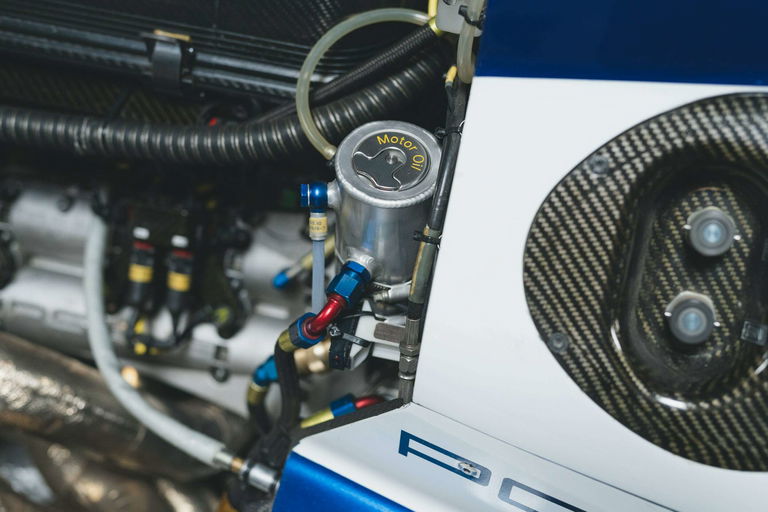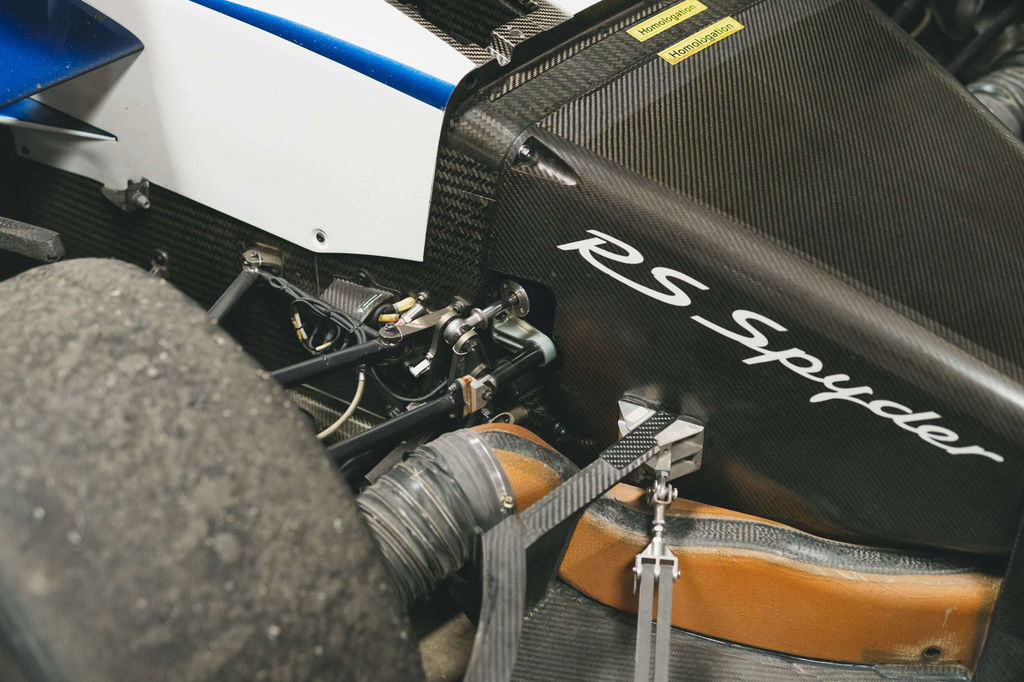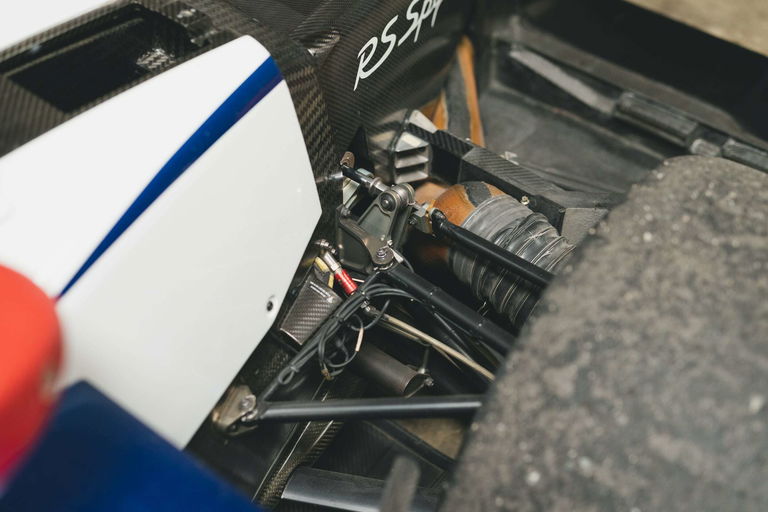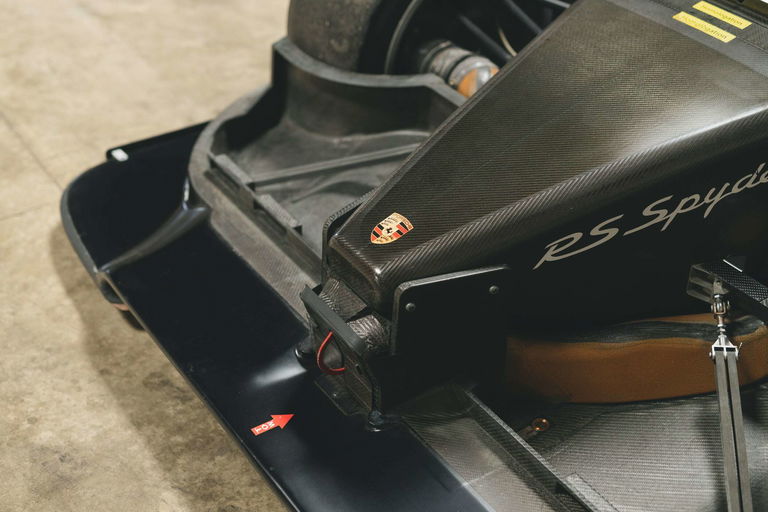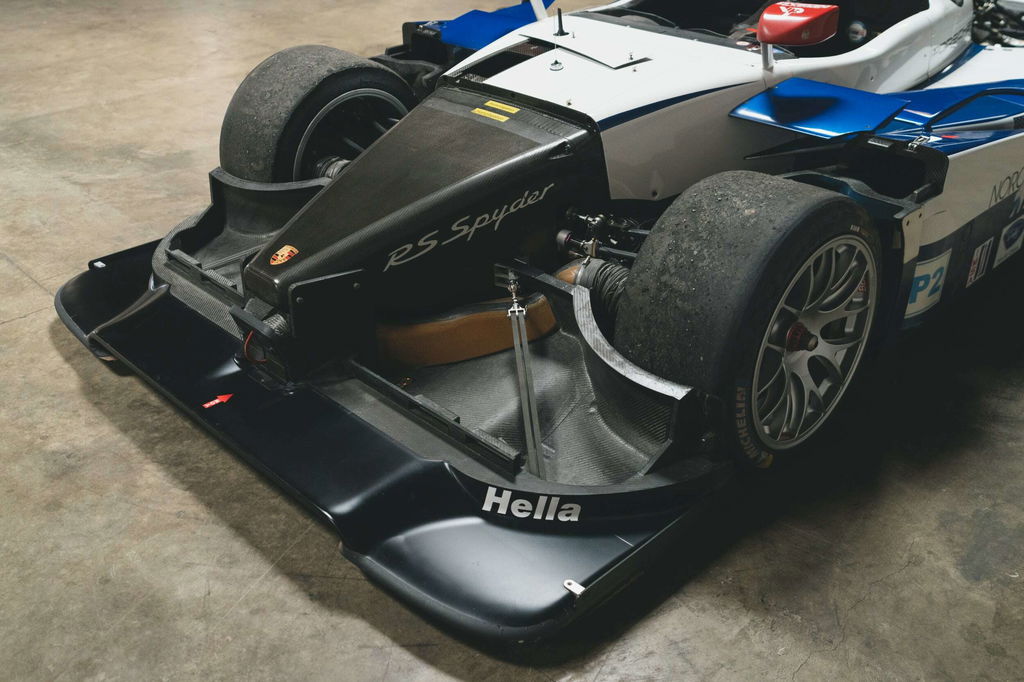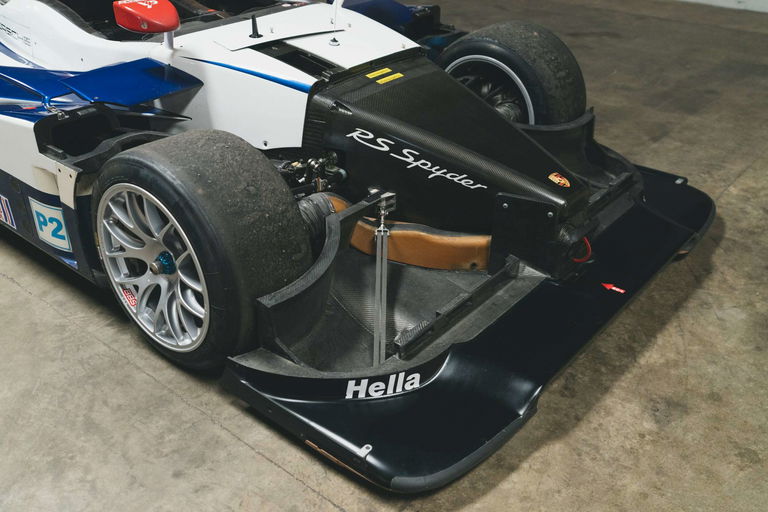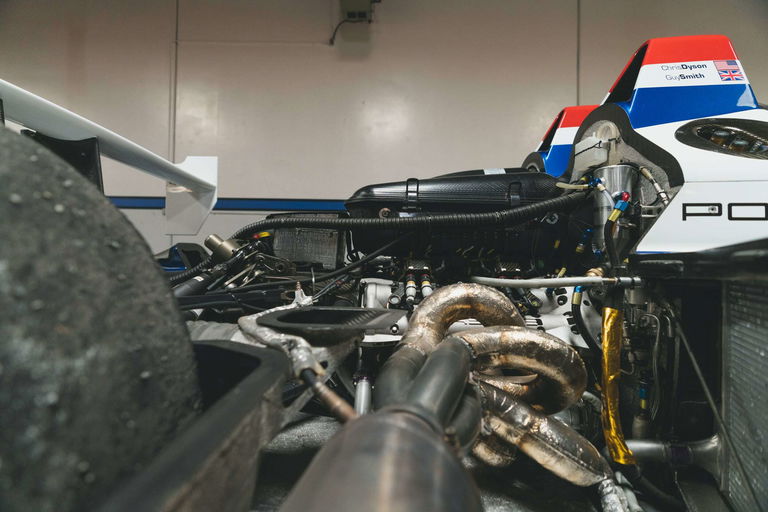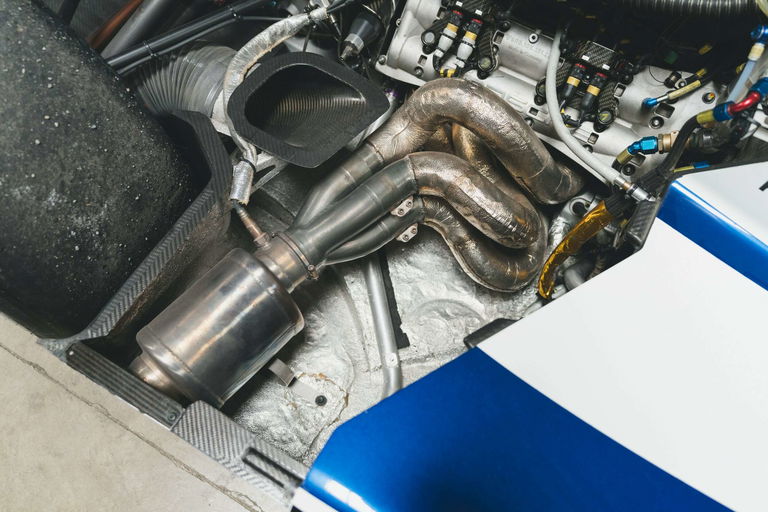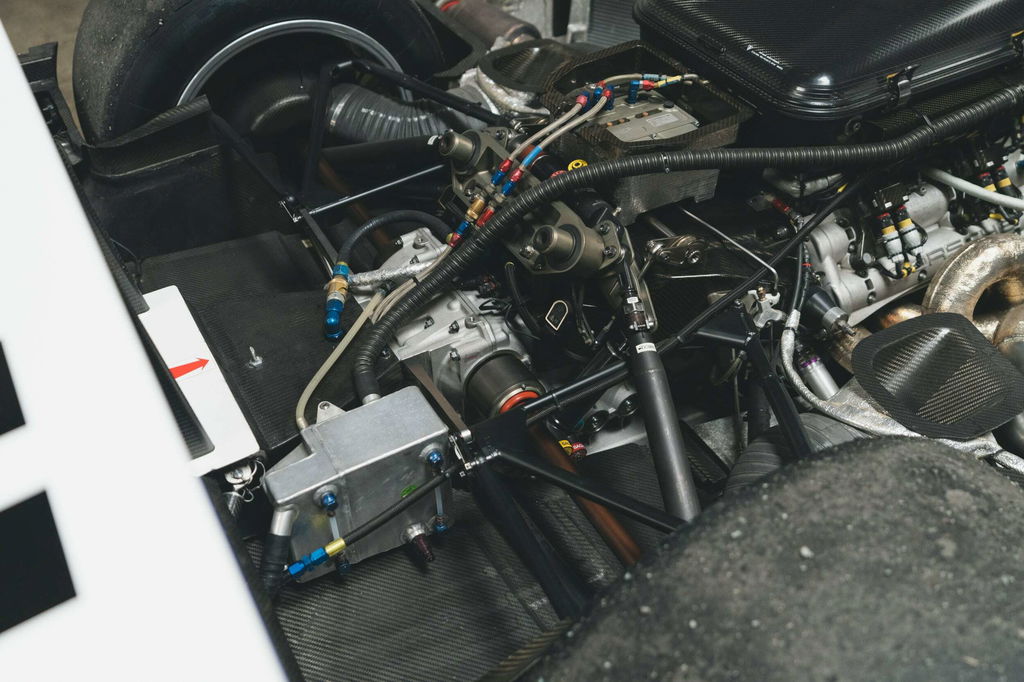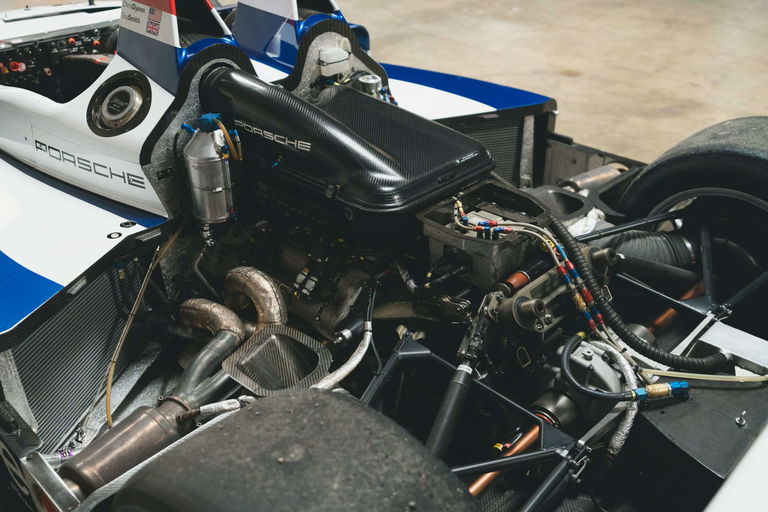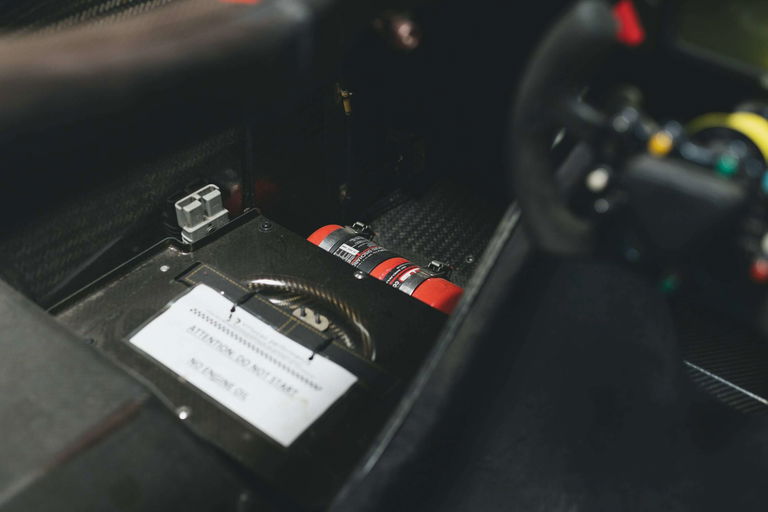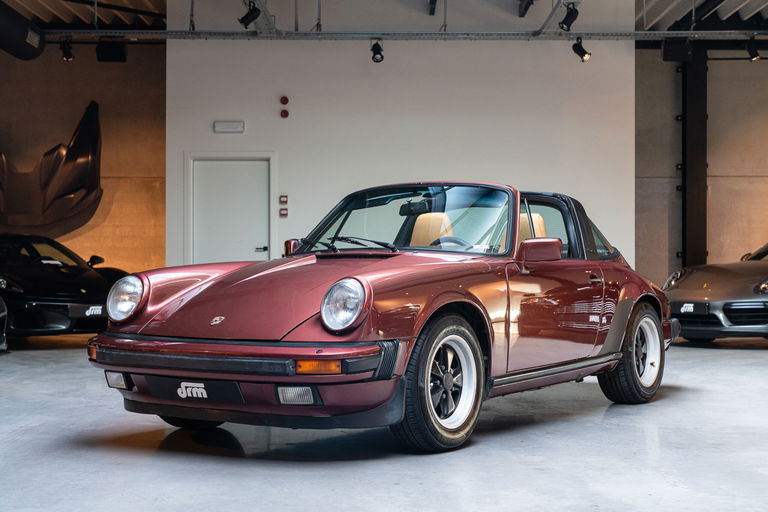Not that the RS Spyder wasn’t sophisticated. It was an all-new car and was full of cutting edge technology, from its carbon fiber monocoque and bodywork to its high-revving (10,000 RPM plus) naturally-aspirated V8 and sequential gearbox, both of which were load-bearing structural elements. The engine used individual throttle bodies, dry sump lubrication, and produced nearly 150 horsepower per liter, even with a restrictor fitted. Suspension was by double wishbones all around, actuating springs and shocks via pushrods.
The car was developed jointly with Penske Racing and raced in LMP2 class rather than the top of the heap LMP1 class, a conscious decision in order to keep the car accessible for privateers. Incidentally, it is precisely this attribute which makes it possible for private owners to continue to run these cars today. The RS Spyder made its racing debut at the end of the 2005 season, racing at Laguna Seca in October. In 2006, the car raced exclusively with Penske (in the iconic yellow DHL livery), with other teams not receiving cars until the 2007 season. The 2006 spec cars had 478 hp engines and were competitive in LMP2 from the outset, winning the class championship handily and taking outright victory at Mid-Ohio ahead of the LMP1 cars.
The 2007 cars were significantly updated and are referred to as the RS Spyder Evo. Not a single exterior body panel was interchangeable with the 2006 car, and their proportions are more lithe. Power was increased to 503 hp and a second team, Dyson Racing began campaigning the RS Spyder in LMP2, giving the Penske cars a bit more competition, which continued in 2008, a season during which Penske bought new cars while Dyson continued to run their 2007 cars. Also noteworthy for 2008 was the appearance of the car on European circuits for the first time. Swiss team Horag campaigned a car, running it first at Sebring to get a handle on the car before campaigning it in Europe. But more remarkable about Sebring in 2008 was the 1-2 overall finish of the RS Spyders from Penske and Dyson, ahead of the third-place LMP1 Audi R10 with turbocharged diesel V12 powerplant.
2008 also marked the RS Spyder’s Le Mans debut, where it came tenth overall and first in LMP2. The car won the LMP2 class at Le Mans in 2009 as well. Subsequent rule changes made the cars ineligible to race, but all told, the RS Spyder won the American Le Mans Series LMP2 class in 2006, 2007, and 2008, and also LMP2 in Europe in 2008, distinguishing the car as one of Porsche’s most successful race cars.
This particular car, #705, is one of the two Dyson cars, and was driven by Chris Dyson and Guy Smith in both the 2007 and 2008 series, participating in a total of 20 races, making it one of the most extensively used RS Spyders built. Of the 20 races it entered, #705 completed 19. The sole exception was Lime Rock in 2008, where the car was involved in a crash which damaged its monocoque. Deeply invested in the cars’ success in ALMS, Porsche air-freighted a replacement monocoque over, employing their engineers to do as much of the pre-work as possible, including installing a wiring harness, plumbing, hydraulic lines, and electronics. The team in Germany also assembled a spares package to replace other crash-damaged components. Dyson’s team performed a miracle of race car building, retubbing the car in time for it to make the first session at Mid-Ohio the following weekend. This herculean feat was described in numerous racing magazines in period and remains one of the most celebrated turn-arounds in modern racing.
Its racing duties with Dyson completed, #705 was returned to Porsche at the end of the 2008 season, and was displayed at the Porsche Museum until 2012 when it was pulled out and used at Weissach for crews to practice pit stops on the forthcoming 919 for Porsche’s return to prototype endurance racing. A representative of the current (and only private) owner saw the car at Weissach being used for this purpose and began negotiations to purchase it from Porsche, with the promise that it would be restored to factory specifications. The purchase was ultimately completed in December of 2013 and a two-year restoration undertaken by Virtuoso Performance in California.
In concert with the purchase, a significant spares package was obtained, an #705 was painstakingly and authentically restored with close collaboration with the factory engineers that worked on #705 in period. A correct, fully rebuilt dyno tested engine and gearbox were sourced directly from Porsche. 705 was stripped down to the tub, and every single component was inspected and evaluated. Any components showing wear were replaced. Every suspension element was crack-tested and certified. All castings were x-ray or dye penetrant inspected. Any components suspected of lengthy time in service were also replaced. New titanium drive axles were fabricated, as were wheels hubs and uprights.The shocks were rebuilt and dyno tested, all hydraulics including the power steering were completely rebuilt. All the pneumatic components were serviced and refreshed as needed. All computers had internal batteries replaced, power circuits tested, and the latest updates installed. The livery was painstakingly and sympathetically restored to the exact appearance when #705 last raced. Simply put, the car was completely refreshed to the same standard as if it were going to go professional racing.
#705 has been thoroughly tested and sorted, and it functions exactly as it should. Its most recent outing was Rennsport 4 Reunion in 2018, where it performed faultlessly.
Of the seven RS Spyders that came to Rennsport, only two were running at the end of the race on Sunday and #705 was one of them, effortlessly completing every session throughout the event. After Rennsport, 705 was fully inspected and prepared, placed in fully race ready condition with all inspections and components current. At the beginning of 2019, #705 was placed in long-term storage mode, a specific protocol defined by Porsche which was followed to the letter. The pandemic saw the continuation of the storage mode, but #705 can be swiftly and readily prepped to return to racing.
The car has massive levels of documentation including technical information, gearing records, setup sheets, aero settings and all other information pertaining to the restoration of #705. Also included is historical, period data from when Dyson ran the car, and even specific lap-by-lap encoded transponder records of #705 at various courses, providing indisputable evidence of its competition history. Finally, the car comes with a confirmation letter from PMNA, describing the chassis replacement and the car’s exploits with Dyson.
This car represents an extraordinary opportunity to acquire a highly significant Porsche Le Mans prototype which was purchased directly from the factory. Exhaustively restored and equally well-documented, the car is among the finest examples extant, both in terms of condition and history. Reportedly the last prototype that Porsche will ever sell to private owners any RS Spyder is the ultimate race car for the avid motorsport enthusiast.


